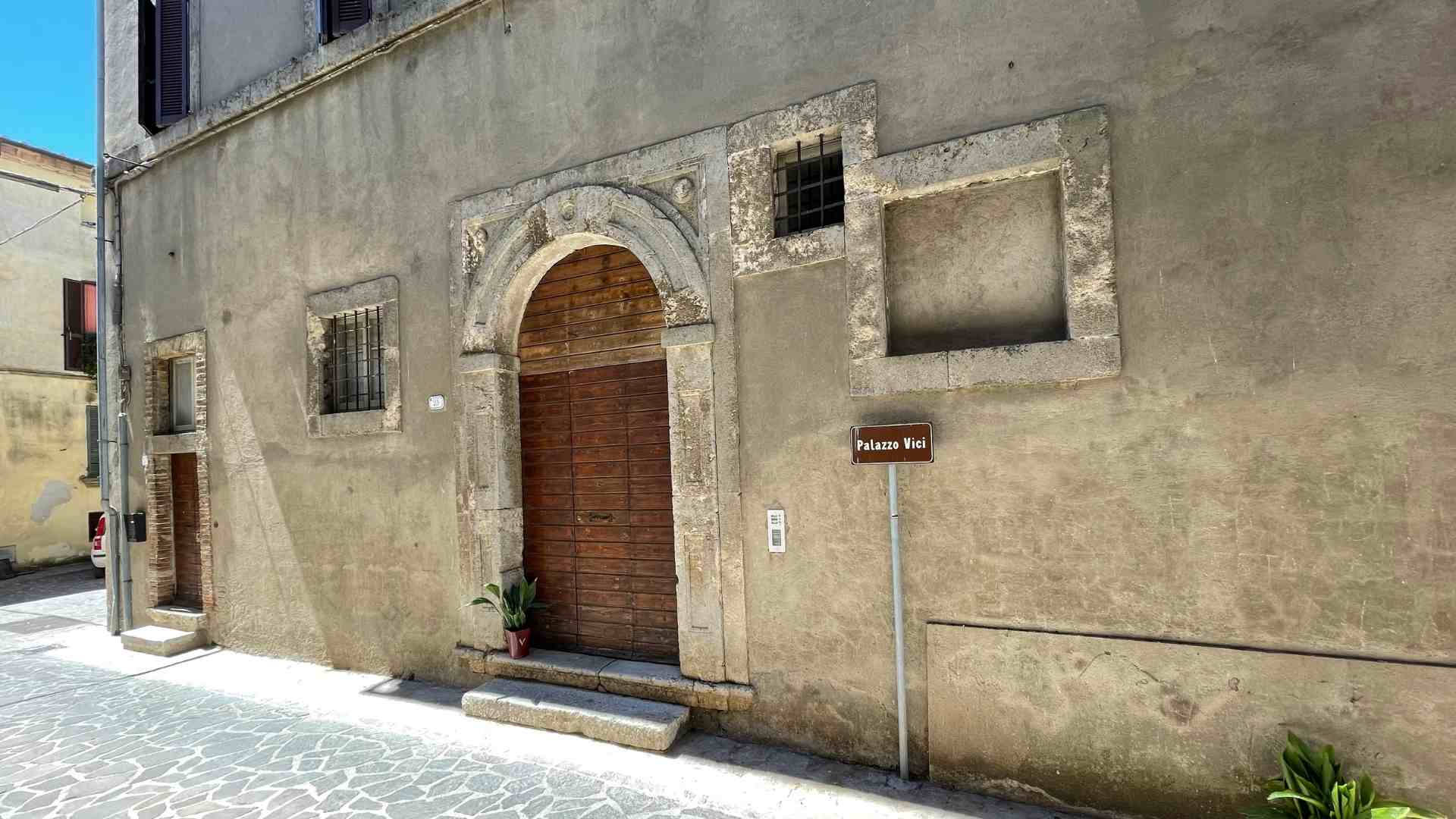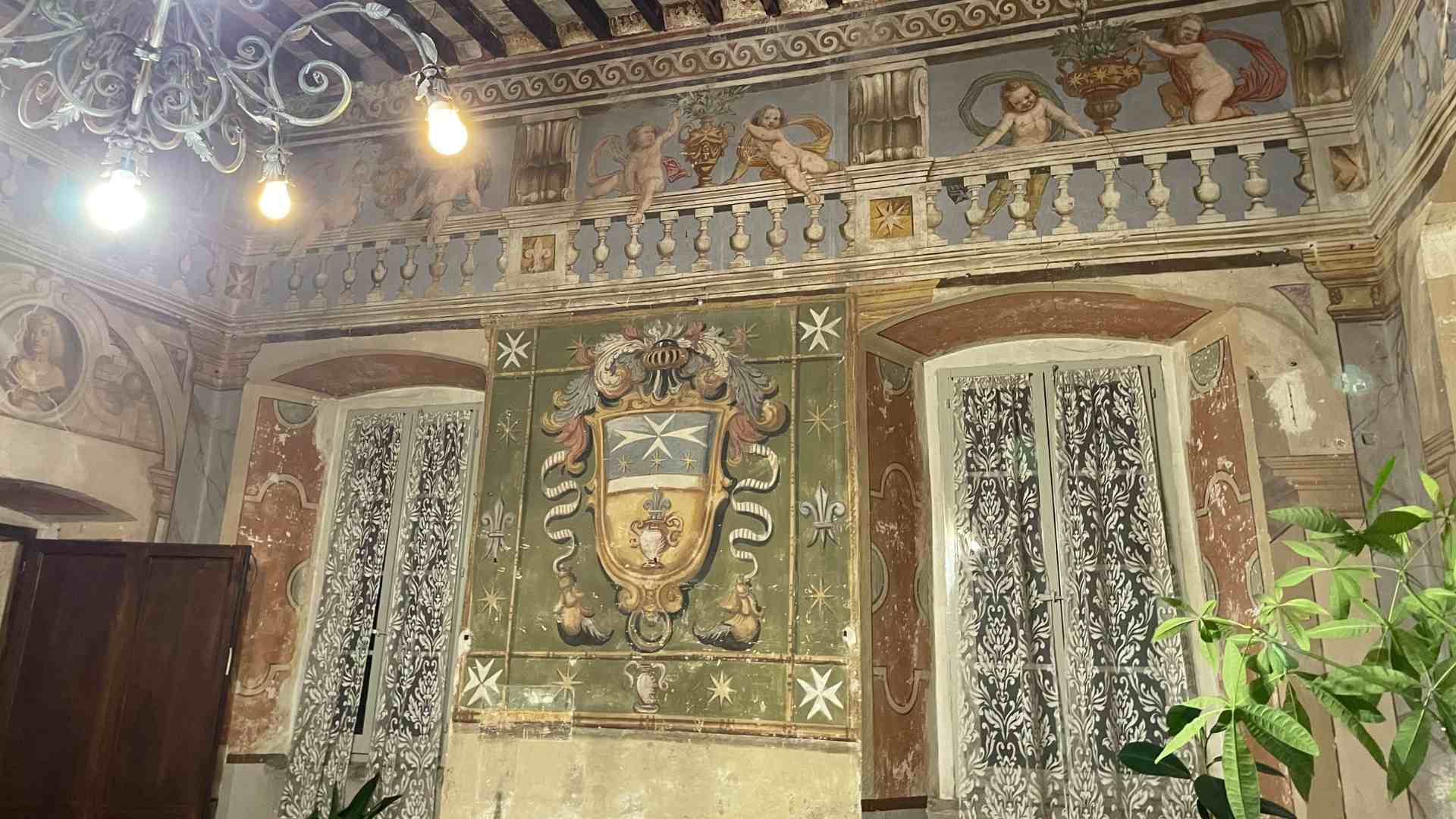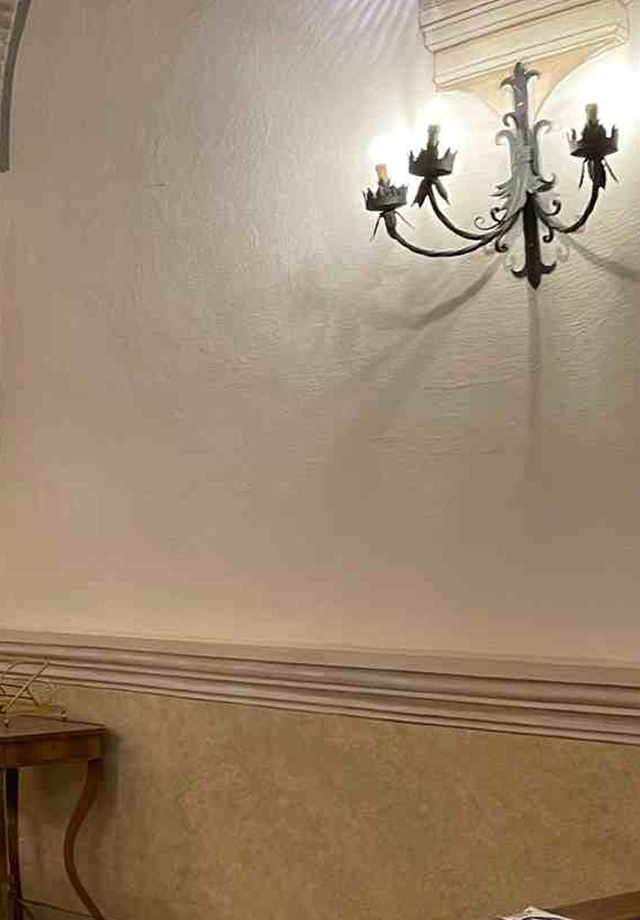
punto di interesse
point of interest


The seventeenth-century Palazzo Vici (Vici’s Palace), home of the noble family whose roots reside in Stroncone, stands within the walls of Avigliano Umbro, next to the Chiesa della SS. Trinità.
Monk Settimio Vici, knight of Malta and nephew of Patrizio – a poet who made his fortune thanks to his marriage with Drusiana of Atti – was the one who built the Palazzo Vici (Vici’s Palace) and the church itself, inside the castle of Avigliano Umbro in the seventeenth century.
The building became the representative structure of the family and had private access to the church. Beyond this access, it had an underground passage and a tunnel “as high as a horse” which, starting from the palace, arrived after about four kilometers, up to Fortezza Alta once a fortress of Vici.

The seventeenth-century Palazzo Vici (Vici’s Palace), home of the noble family whose roots reside in Stroncone, stands within the walls of Avigliano Umbro, next to the Chiesa della SS. Trinità.
Monk Settimio Vici, knight of Malta and nephew of Patrizio – a poet who made his fortune thanks to his marriage with Drusiana of Atti – was the one who built the Palazzo Vici (Vici’s Palace) and the church itself, inside the castle of Avigliano Umbro in the seventeenth century.
The building became the representative structure of the family and had private access to the church. Beyond this access, it had an underground passage and a tunnel “as high as a horse” which, starting from the palace, arrived after about four kilometers, up to Fortezza Alta once a fortress of Vici.

The building, completely incorporated in the fabric of the medieval town, preserves on the ground floor – once dedicated to services – a small library with the offices of the parish and a small church from where you can see the small trap door with access to the basement. Una bello scalone accompagna al piano nobile con due ambienti completamente affrescati e con soffitti originali decorati:
The second floor was used by the servants.
The structure bears the name of the Vici family, originally from Stroncone, already famous in the fifteenth century for having counted among its members three Blesseds and several other characters of the Franciscan order.
The Vici were related to the most important families of Todi and Spoleto, playing an important role in connecting the realities of southern Umbria.
The progenitor was Ludovico, from whose diminutive “Vico” the descendants took the surname.
Ludovico and his wife Isabella were the parents of Beato Antonio da Stroncone (Blessed Antonio from Stroncone) born at the end of the fourteenth century and to whom a chapel of the Fortezza Alta di Dunarobba.
In Avigliano the Vici family arrived at the beginning of the ‘600, thanks also to the marriage between Drusiana of Atti and Patrizio Vici, and acquired the land around the castle. Patrizio left his inheritance to his nephew Sebastiano who, in turn, arranged that his brother Settimio had as a donation possessions and assets in Avigliano. It was Septimius who built the palace and the church.
Settimio settled in the house in the early years of the century with his natural daughter Angela, born in Todi in 1624.
At the same time in Avigliano was also present Captain Fabrizio Vici, son of Aquilante and brother of Settimio, probably engaged in the construction of the Fortress of Vici – the Fortress of Dunarobba – guarding the Via Amerina, and guarding the power of the nearby Castello di Sismano, of the Corsini princes of Florence.

The building, completely incorporated in the fabric of the medieval town, preserves on the ground floor – once dedicated to services – a small library with the offices of the parish and a small church from where you can see the small trap door with access to the basement. Una bello scalone accompagna al piano nobile con due ambienti completamente affrescati e con soffitti originali decorati:
The second floor was used by the servants.
The structure bears the name of the Vici family, originally from Stroncone, already famous in the fifteenth century for having counted among its members three Blesseds and several other characters of the Franciscan order.
The Vici were related to the most important families of Todi and Spoleto, playing an important role in connecting the realities of southern Umbria.
The progenitor was Ludovico, from whose diminutive “Vico” the descendants took the surname.
Ludovico and his wife Isabella were the parents of Beato Antonio da Stroncone (Blessed Antonio from Stroncone) born at the end of the fourteenth century and to whom a chapel of the Fortezza Alta di Dunarobba.
In Avigliano the Vici family arrived at the beginning of the ‘600, thanks also to the marriage between Drusiana of Atti and Patrizio Vici, and acquired the land around the castle. Patrizio left his inheritance to his nephew Sebastiano who, in turn, arranged that his brother Settimio had as a donation possessions and assets in Avigliano. It was Septimius who built the palace and the church.
Settimio settled in the house in the early years of the century with his natural daughter Angela, born in Todi in 1624.
At the same time in Avigliano was also present Captain Fabrizio Vici, son of Aquilante and brother of Settimio, probably engaged in the construction of the Fortress of Vici – the Fortress of Dunarobba – guarding the Via Amerina, and guarding the power of the nearby Castello di Sismano, of the Corsini princes of Florence.

Continue the tour of Avigliano Umbro:
Discover the Chiesa della SS Trinità
Or discover the points of interest of Avigliano Umbro and its territory:
[Avigliano Umbro and its territory– link a itinerario]
discover all the points of interest of the village
Information, appointments and travel proposals on:
The Progressive Web App is part of the project “Le Terre dei Borghi Verdi”, realized in collaboration and with the contribution of Regione Umbria – Assessorato al Turismo
©2021 Le Terre dei Borghi Verdi
Le Terre dei Borghi Verdi
Welcome in Southern Umbria,
where the slowness becomes value
Information, appointments and travel proposals on:
The Progressive Web App is part of the project “Le Terre dei Borghi Verdi”, realized in collaboration and with the contribution of Regione Umbria – Assessorato al Turismo
©2021 Le Terre dei Borghi Verdi